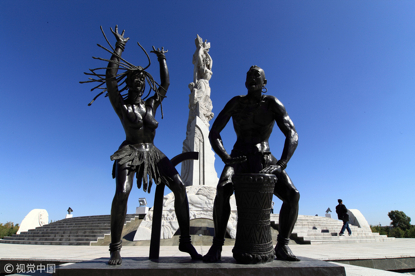I spent four years teaching English in Changchun, a city of six million people in Jilin Province in the far north-east of China, about nine hundred kilometres south of China’s border with southern Siberia. Changchun literally means ‘long spring’, a misnomer. The months from November to April are a long cold winter, when daytime temperatures fall to -17 degrees Celsius if midday skies are blue, with midnight temperatures often plunging to -25.
Trudging along foot paths in freezing snow is an endurance test; an invitation too to slip on hardened ice and break a leg. I acclimatised, managing to avoid slipping, dressed in appropriate padded clothing and footwear.
During free days on the weekend, when not teaching TEFL classes in the university campus, I sometimes earned extra money by giving private tuition. Foreign TEFL teachers earn modest salaries, live in small free apartments and have their return airfares paid on satisfactory completion of a twelve-month contract.
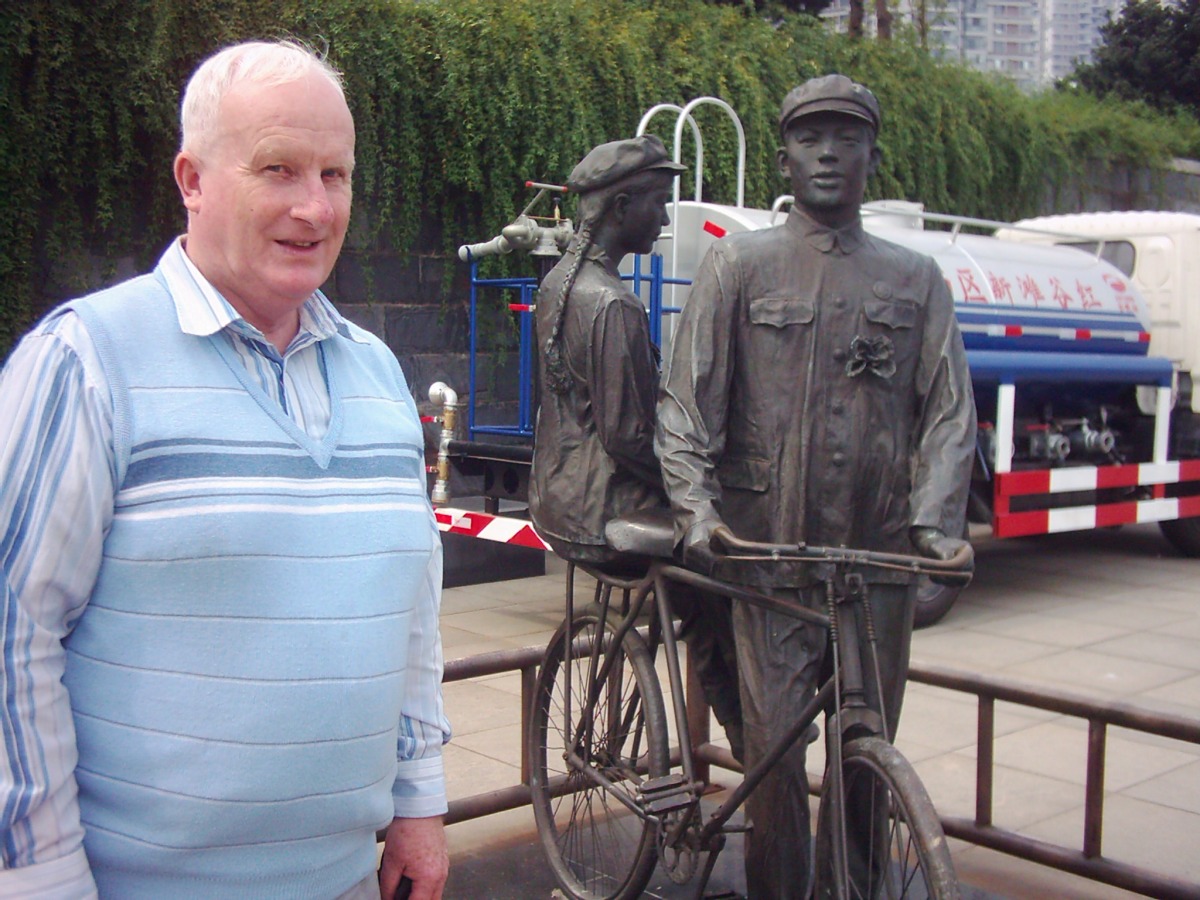
Nanchang wedding bike, 2007.
One lady, referred to me by the Foreign Students office, came once a week for English-speaking sessions at my centrally heated apartment. I spoke about life in Ireland, Irish attitudes towards marriage and children, traditional music festivals, the arts, horse racing, football and the like.
It was either May, when early summer temperatures arrive, or October, when late autumn glows moderately before winter descends that she invited me in her small car to visit the World Sculpture Park about an hour away.
It seemed a grandiose name for a park in a provincial city, but when I got there I realized that the name was no exaggeration. Parking the car on a nearby street, we walked in through the main gate and proceeded along paved footpaths that went sometimes in straight lines and alternately in rambling directions around patches of planted trees and shrubs. The area, covering ninety-two hectares, contains 441 works of 397 sculptors from 212 countries and regions.
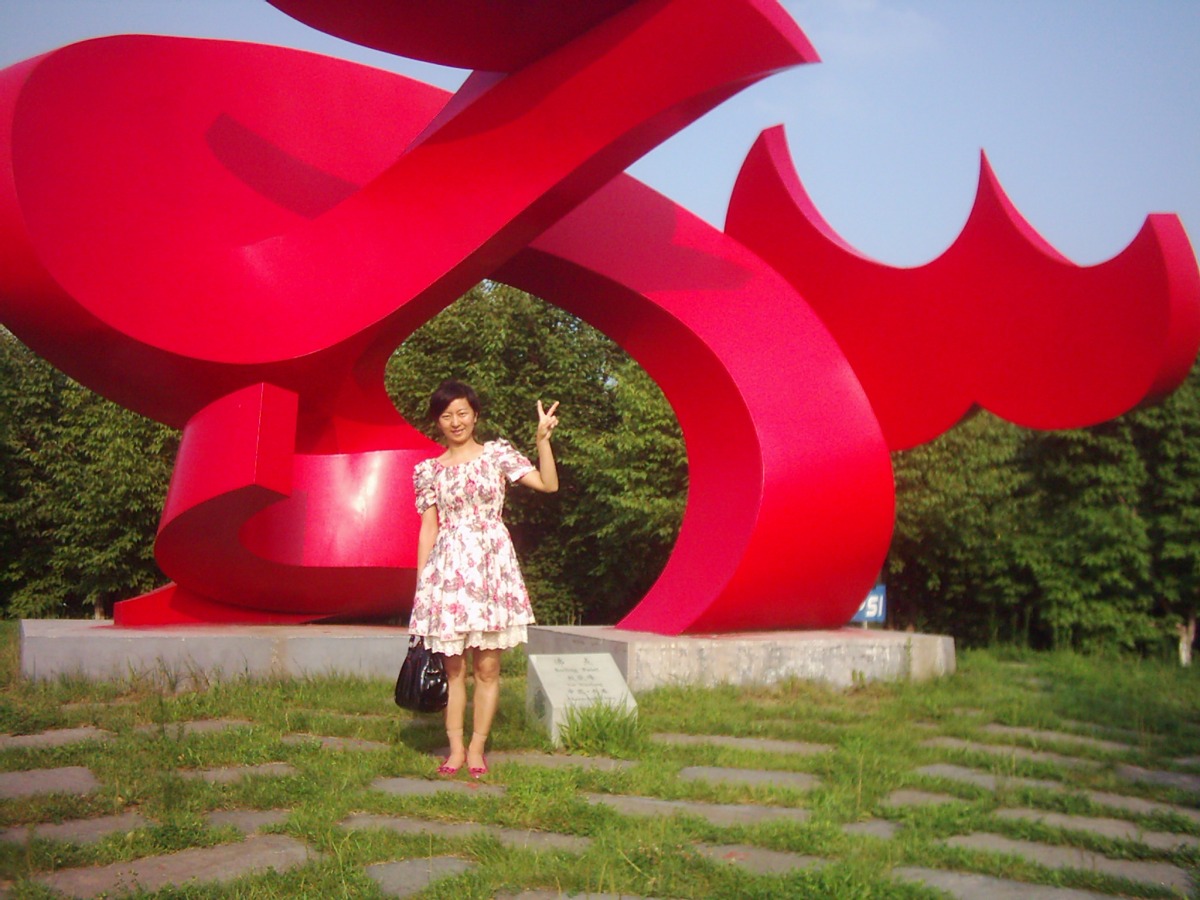
Changung Sculpture Park, 2013.
Along these paths were sculptures in stone, bronze, sheet metal and chemically treated wood. The works were by sculptors from around China and other parts of the world, notably Africa, the Caribbean and countries like Brazil. American, British, European and other sculptors had also contributed to the park display. A lake fed by a small stream stretches along centrally.
World Sculpture Park was officially opened in 2003, but since the mid-1970s there had been a simpler version, with less trees, of works by Chinese sculptors.
In a central raised area stood a tall monument dedicated to world peace – the kind of state-approved monument one might expect to find in a Communist country. I am, however, happy to relate that since the early 2000s the park has evolved in an eclectic and generally non-propagandist manner.
Changchun World Sculpture Park adopts both Chinese and foreign gardening styles. It now teems with individual sculptures in multiple styles and shapes. The long lake is a central focal feature, with green areas dotted around. In the background, outside the park railings, loom tall functional buildings of the expanding modern city. Within the park creative diversity seems to contend with the city’s high-rise architectural functionality.
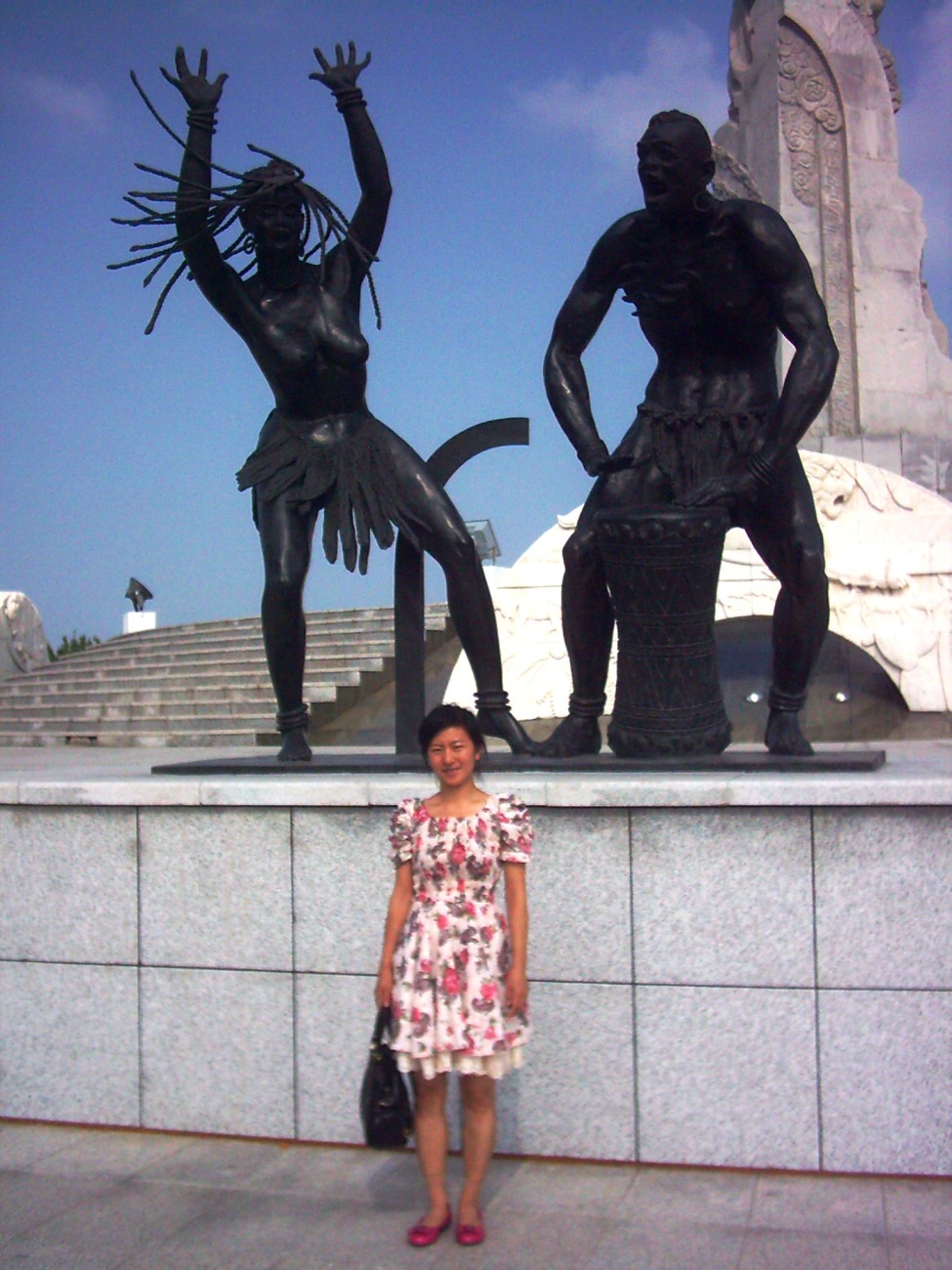
Changung Sculpture Park, 2013.
Why African Sculptures?
The city authorities have invited sculptors from Africa, North America and elsewhere to visit the city and spend a few months designing and preparing their works before having them finished in bronze casting foundries and other buildings before returning, with ample financial rewards and certificates, to their home countries.
The visiting sculptors work during the warm periods of the year. It would be impossible to accomplish anything significant during the months of sub-zero temperatures.
Why African sculptors especially? The answer lies inside the sculpture museum beside the main park entrance. This museum is heated in winter and cooled by air conditioners when outside temperatures soar. In one room there is a shelved display of ebony woodcarvings from coastal towns of Southern Tanzania. These were brought back to Changchun city by citizens who had worked in that country and travelled during holiday time. They donated the artifacts to the park museum.
Having paid our modest entry fee, my female English learner escorted me around sections of the park and I took photos which I hope speak for themselves.
African dancers in dark bronze, a calypso band from the Caribbean, (only the sunny, rhythmic steel band sound is missing), football feet kicking, yes, a football, a giant red abstract done in sheet metal, and children playing. I only took a few photos and regret not taking more.
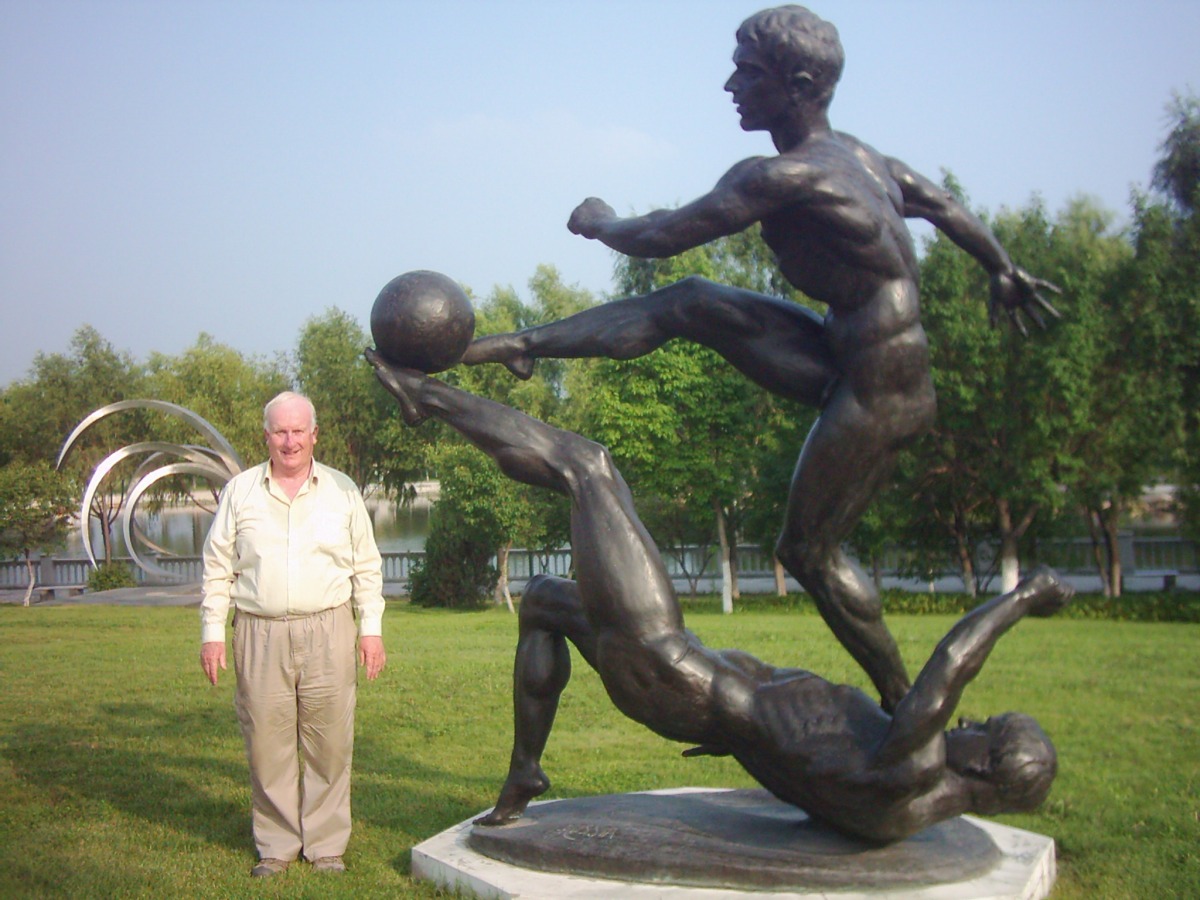
Changchun Sculpture Park, 2013.
In coastal Tanzania and along the north coast of Mozambique African wood carvings, known as Makonde carvings, are generally honed from ebony wood, with a deep brown and black colour. Many such carvings are actually carved from the African blackwood tree. Known locally as mpingo, it is found widely in East Africa. Carvings are made from a single block of wood in different sizes. Large pieces are sold for export at upmarket prices.
Today in my home I have a few woodcarvings from parts of Tanzania that are not in the expensive Makonde style. These and wood carvings from Zambia and Kenya are appropriate reminders of my African years.
Mashona stone sculpture in Zimbabwe is also spectacular. It is traditional in families and passed on from father to son – I don’t know if interested daughters can get involved too. Works in soapstone, marble and granite are highly prized. Some pieces are abstract while others portray human figures.
Today, commercial galleries in England, Germany, France and North America import Zimbabwean sculpture and sell them to high-end art buyers. My understanding is that Zimbabwean sculptors have worked in Changchun’s World Sculpture Park, but my few hours there did not enable me to find an example.
I think it would be interesting if one of the smaller Irish cities such as Cork, Limerick, Galway, Sligo or Derry, could embark on creating a World Sculpture Park along the non-political lines pursued since the early 2000s by Changchun.
With students and New Irish citizens from many countries and ethnic origins, Ireland has become a multicultural society. An Irish World Sculpture Park would be an inspiring tourist attraction. It might also inspire the New Irish to take an interest in the sculptural creativity of the countries from which they are descended.

